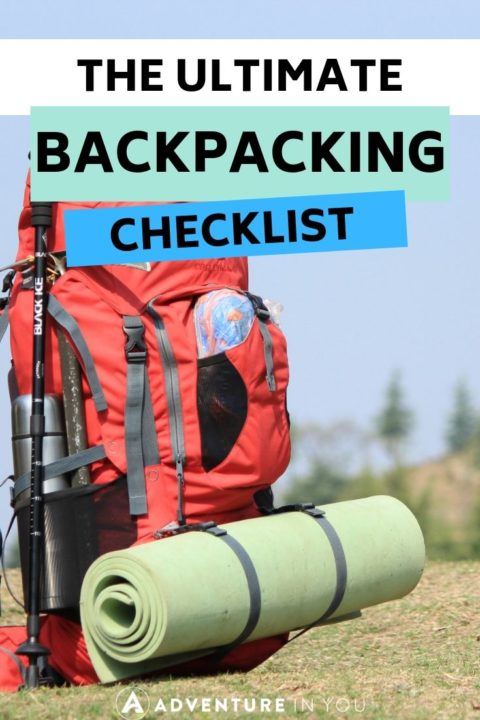Getting ready for a trip to the great outdoors? There’s nothing quite like living out of a pack and fending for yourself. That said, the first rule of the Boy Scouts is to always be prepared! So use this backpacking checklist to make sure you have all the backpacking gear you need for your adventure.
Backpacking is a tough but rewarding experience. You have to carry everything you need, for however long you’ll be gone for. Hut since it’ll all be on your back, you need to be very careful about the weight and durability of what you bring.
This backpacking checklist has the essentials all the way down to the fun stuff, filled with our top picks for all the supplies you’ll need along the way.
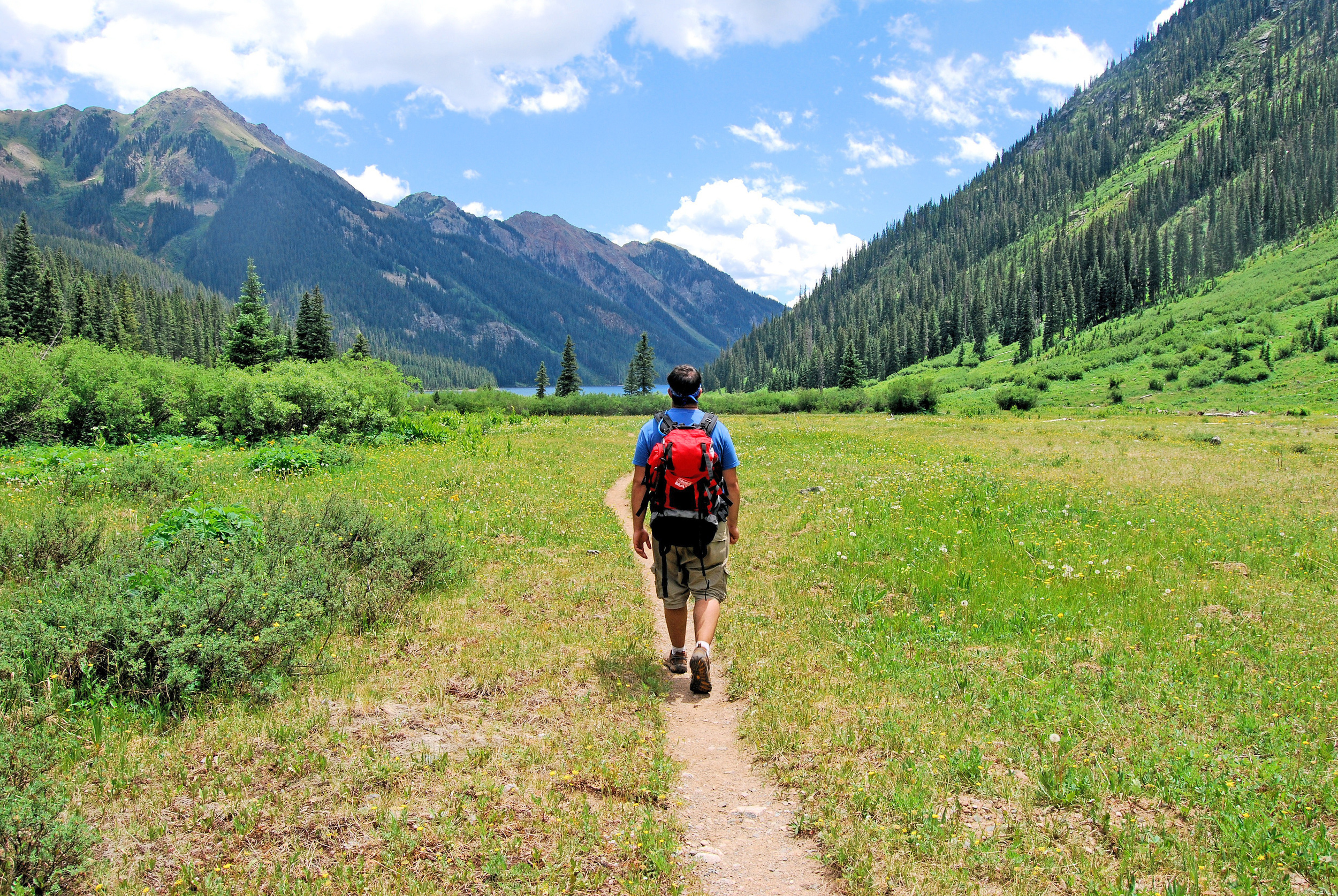
View Contents
At A Glance: The Definitive Backpacking Checklist
Here’s everything you’ll find on our backpacking checklist, but keep scrolling to find out our top picks for each item and why we depend on them for backpacking trips!
General Backpacking Gear
Kitchenware
- Camp Stove with Extra Fuel
- Cooking Kit
- Pot & Pan
- Bowl
- Utensils
- Mug
- Sponge & Biodegradable Dish Soap
- Trash Bags
Clothing & Shoes
- Base Layer
- Hiking Pants
- Dri-Fit Tops
- Long Sleeve Shirt
- Sweatshirt
- Lightweight Raincoat
- Dri-Fit Underwear
- Sports Bras
- SmartWool Socks
- Hiking Boots
- Slip On Shoes
- Cold Weather Clothing
Toiletries
Backcountry Essentials
- Compass
- Water Bottle
- Water Filter
- Headlamp
- Multi-Tool
- Duct Tape
- Emergency Whistle
- Emergency Blanket
- Fire Starter
- First Aid Kit
- Lighter / Waterproof Matches
- Bugspray
- Sunscreen
- Sunglasses
Optional Items & Fun Stuff
- Trekking Poles
- Lantern
- Hat
- Bathing Suit/Board Shorts
- Quick Dry Towel
- Daypack
- Book
- Journal & Pens
- Camera/GoPro
- Hammock
- Cards
- Binoculars
Don’t Forget!
- ID
- Keys
- Phone
- Wallet with Extra Cash
- Insurance
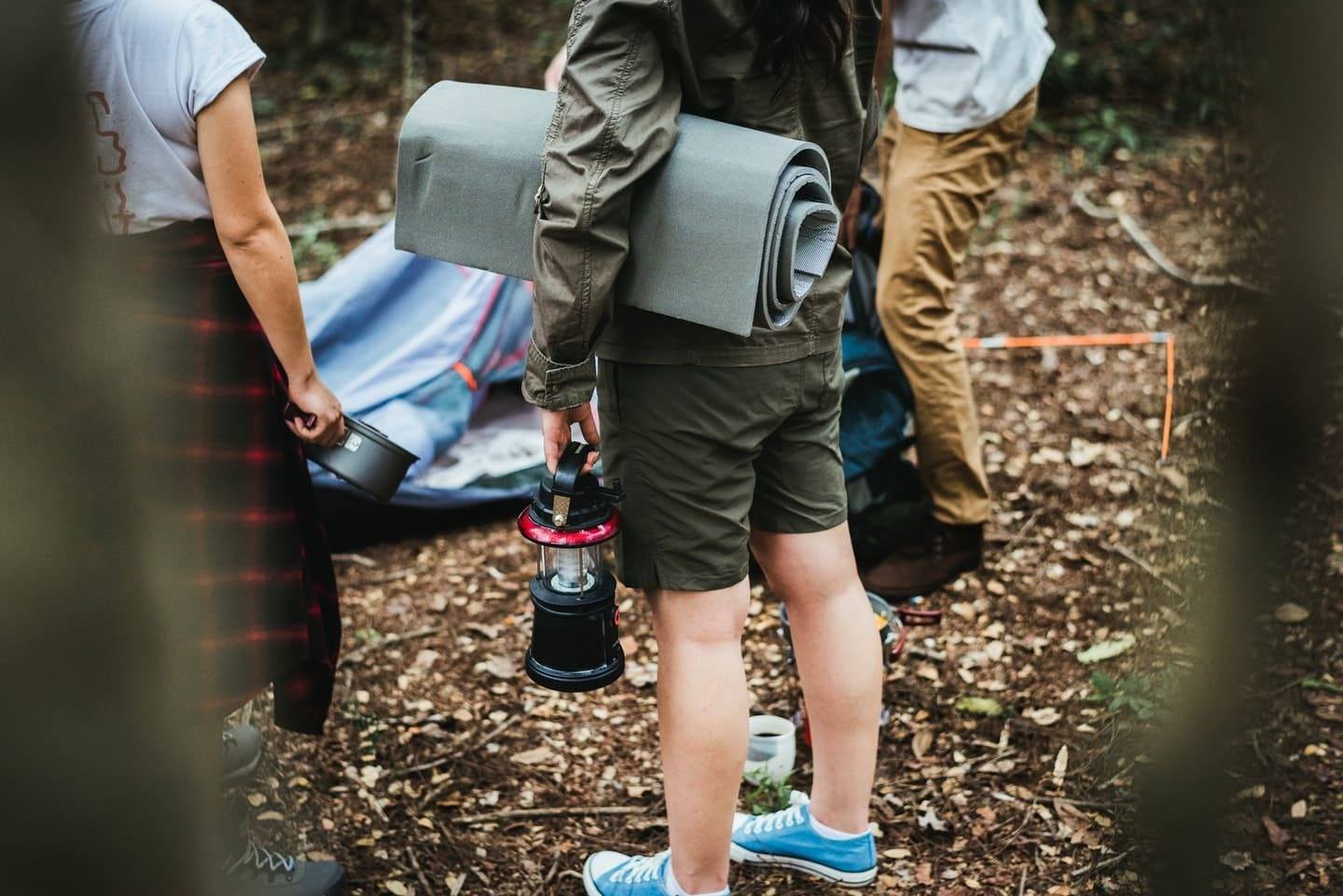
The Complete Backpacking Checklist
Without further ado, here is our complete backpacking checklist with everything you need for an outdoor adventure!
General Backpacking Gear
If you’re setting off on a trip, these should be the absolute first items on your backpacking checklist.
Backpack
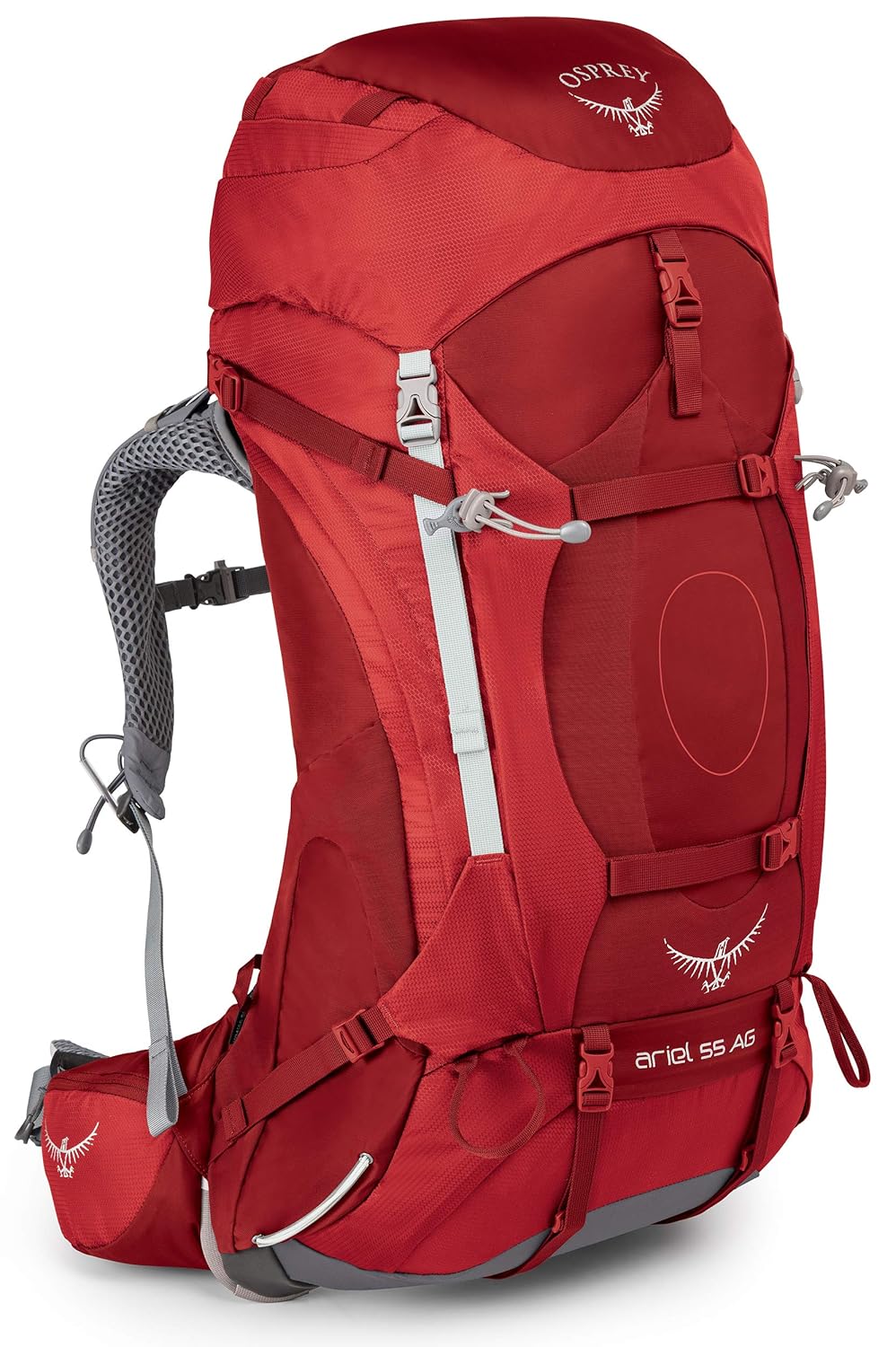
The first and probably most essential gear item for any backpacking trip is well… a backpack. It’s important that you choose one that not only fits everything you need but is lightweight, durable and ready for action.
For backpacking trips, it’s nice to have a backpack that has many pockets and compartments for staying organized along the trail and having everything you need in arm’s reach.
It’s also quite convenient to have a separate compartment for your sleeping bag so you don’t have to unpack everything to access it at the end of a long day. Look for straps on the exterior of the bag for attaching additional gear to your pack. You’ll also want breathable material to keep you cool throughout your trip.
We’re a huge fan of Osprey backpacks – especially the Osprey Ariel/Atmos for backpacking.
We find they check off every box when it comes to a quality piece of gear.
For a full list of the best travel backpacks, check out our backpacks guide!
Tent

You’re also going to want to take a tent on your adventure for shelter along the trail or in the backcountry. When looking for a good backpacking tent, there are some considerations to keep in mind like how many seasons the tent is good for, the size and capacity of it, and of course the overall weight.
It’s also important to choose a tent that either comes with a rainfly or packs a separate rainfly. This will ensure you’ll stay dry if there’s any unexpected showers while sleeping outdoors.
The Kazoo Waterproof Backpacking Tent is an ideal backpacking tent because it’s good for three-season use, lightweight, durable, and extremely easy to set up and break down. Doesn’t hurt that it comes with a compression sack either!
Our guide to the best tents can help you pick one that’s perfect for your backpacking trip!
Sleeping Bag

Of course, inside the tent, you’ll need a sleeping bag to crawl into after trekking around all day. Sleeping bags for backpacking should be lightweight (are you noticing a theme here?), durable, and keep you warm in a variety of conditions.
What time of year you’ll be backpacking and the climate of your specific location will help you decide what kind of sleeping bag to choose, but if you’re looking for something to use no matter the weather, I’d go with a three-season bag.
The Western Mountaineering UltraLite is the perfect pick for backpacking because it weighs only 1lb 13oz and has a three-season rating so it’s rather versatile. Filled with goose down, you’ll be nice and cozy at the end of the longest days.
Quick Tip: It’s also nice to choose a sleeping bag with a stuff sack so that you can compress it and store it safely inside of your pack. If you love a certain bag and it doesn’t come with a stuff sack, you can always purchase on separately!
For more on the best sleeping bags, check out our in-depth guide
Sleeping Pad

While they may seem like more of a “glamping” accessory, sleeping pads are absolutely necessary for ensuring you get a good night’s sleep while backpacking. Choose one that doesn’t weigh much and can be easily strapped onto the side of your pack so it doesn’t take up precious space inside the bag.
You (and your back) will be thanking yourself ten times over when you’re protected from rocky ground during the night.
Compressible Pillow

A pillow may also seem like a luxury when backpacking but again with the rocky ground… If you’re bringing along heavier clothes, you should be fine with balling up a sweatshirt to rest your head on, but the alternative is to bring along a compressible pillow for real comfort.
This one weighs next to nothing and even comes in a convenient carry bag that you can strap onto your pack!
Kitchenware for a Campsite Kitchen
After you have your general gear sorted, you’ve got to pack up your campsite kitchen. Since you’re completely dependent on yourself, you have to bring not only enough food but also the proper supplies to cook.
When it comes to packing food for your backpacking trip, always pack enough for an extra day on the trail. It’s also best to have lots of little, easy-to-access snacks like trail mix, beef jerky and protein bars to eat throughout the day.
Here’s what you need for your campsite kitchen.
Camp Stove

The first step to setting up your backcountry kitchen is to pack a dependable and reliable camp stove. There is where you’ll be doing all of your cooking so you want something that’s going to last for the duration of your trip and beyond.
This camp stove is super compact and quite lightweight, making it an awesome option for backpacking. Even though it’s heavy, remember to take along extra fuel so that you always have something hearty and warm to eat!
Cooking Kit

You’re also going to need something to prepare the food, cook it and serve it with. A cooking set is a good bet because it has everything you need for cooking on the go.
This set comes complete with what you need for preparation, including a cutting board, sharp knife, scissors, and serving utensils.
Pot & Pan

Now that your food is prepped, you’ll need something to cook it in. A pretty standard pot and pan should do the trick.
While it may take up a decent amount of space, remember that you can use the inside of the pot for storage while moving around!
Bowl

Eating time! Bring along a bowl for all of your meals. This collapsible one is made of high quality silicon, meaning it’s durable and is able to handle high temperatures.
So, no worries when it comes to filling it with steaming hot goodness! Plus, the fact that it’s collapsible makes it that much easier to pack.
Utensils
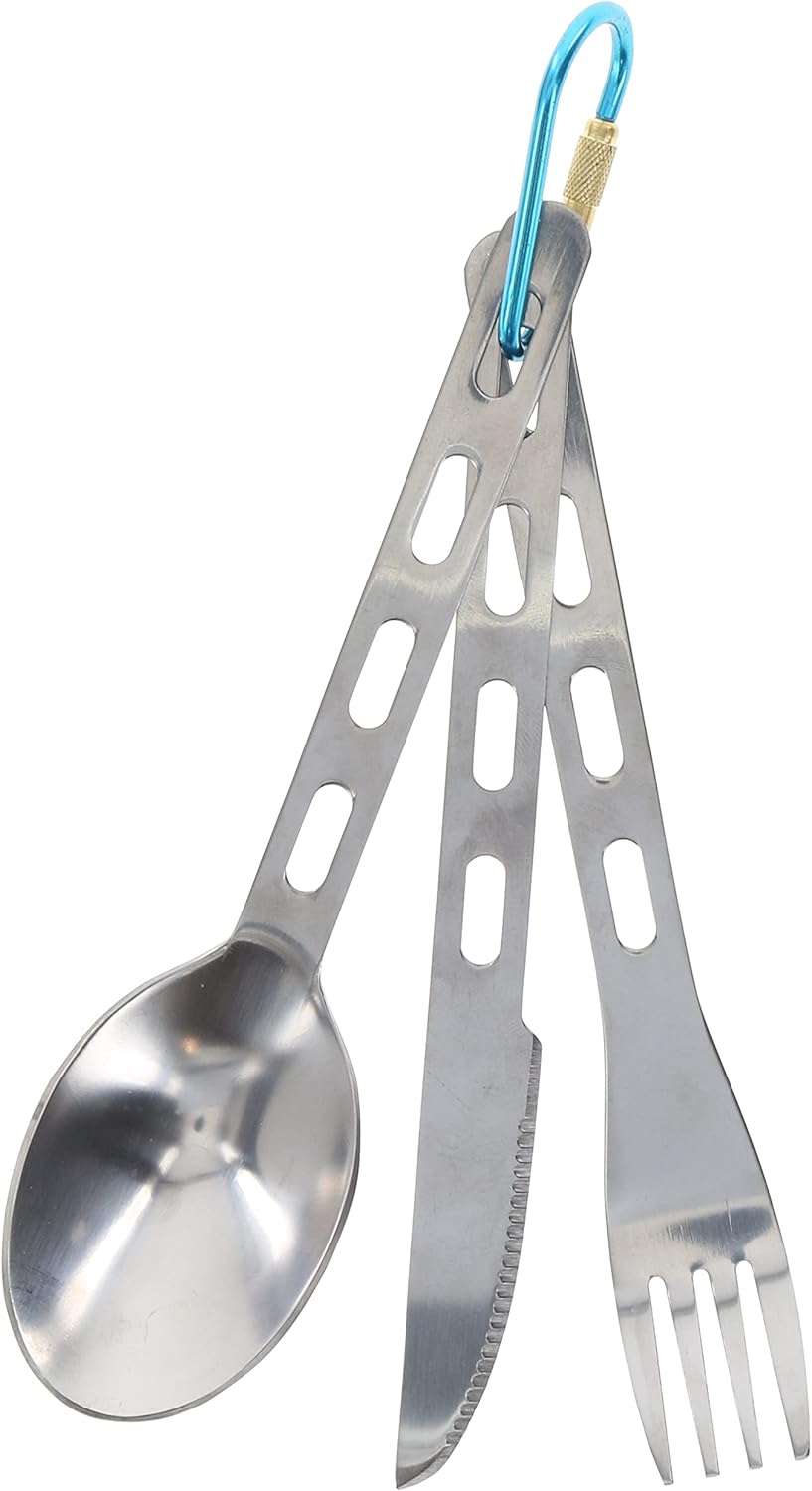
Now, for something you’ll need for eating. It’s best to get a fork, spoon, and knife set unless you’re a fan of sporks, in which case you can get an all-in-one utensil.
I’m partial to sets like this one that comes with everything attached to one another so you never risk losing a stray knife or spoon. Not to mention you won’t have to balance each utensil as you sit on the ground trying to enjoy your meal!
Mug

There’s nothing like a hot cup of coffee or cocoa the morning before a long hike! This is a great mug to bring with you because it will not only keep your beverages warm but there’s also a lid to keep creepy crawlies from finding their way inside.
You can even use it as a to-go cup if you want to finish up on the trail!
It’s also super lightweight (only 3.5 ounces!) and comes with a collapsible handle so you won’t have to worry about it being bulky in your pack.
Sponge / Biodegradable Dish Soap


When all is said and done, it’s a must to clean your dishes after you’ve finished eating. The last thing you want to do is pack a dirty bowl or worse — leave one out to attract creatures of all kinds.
Pack a sponge and biodegradable dish soap to keep everything nice and clean without harming the environment.
Trash Bags

Finally, no good kitchen is complete without a trash can (or a trash bag in this case).
It’s extremely important to dispose of your trash properly while backpacking, so makes sure you have something durable to round up trash and pack it out in.
Backpacking Packing List: Clothing & Shoes
Okay, so you have everything you need to set up camp, now time to dress yourself. You’re not going to have laundry on the trail and you’re not going to want to add extra weight to your pack by bringing tons of clothing.
Bring a few of each item and you should be just fine, as long as you get used to rewearing your clothes!
The type of clothing you bring greatly depends on where and when you’ll be backpacking. Seasons change drastically in the wilderness and at high altitudes, so it’s nice to have some warm clothing even in the hotter months.
Here is a general list of what you’ll need to backpack in fair conditions.
Base Layer

To start, you’re going to want to have a base layer. If you’re backpacking in cold weather, this is an absolute must because they help keep you cool by wicking moisture and retaining body heat.
Even if it’s not particularly cool out, it’s still nice to have a base layer for sun protection and getting rid of excess sweat. They also make great lounge clothes and PJs for chillier nights!
This base layer set is the best because it’s made of merino wool, which is the best material possible for thermals. Not only does it wick moisture, but it also masks odor. This is particularly useful because last time I checked, there aren’t any washing machines in the backcountry.
For a full list of the best base layers and thermal underwear for women, check out our guide!
Hiking Pants

During the day, hiking pants are a practical and versatile option. These ones have several benefits like protecting you from harmful UV rays, wicking moisture, and tons of pockets for storage.
They also zip off at the knee so you can wear them as shorts when you get too hot! No, these pants are not only for dads but incredibly useful for backpacking as well.
Dri-fit Tops
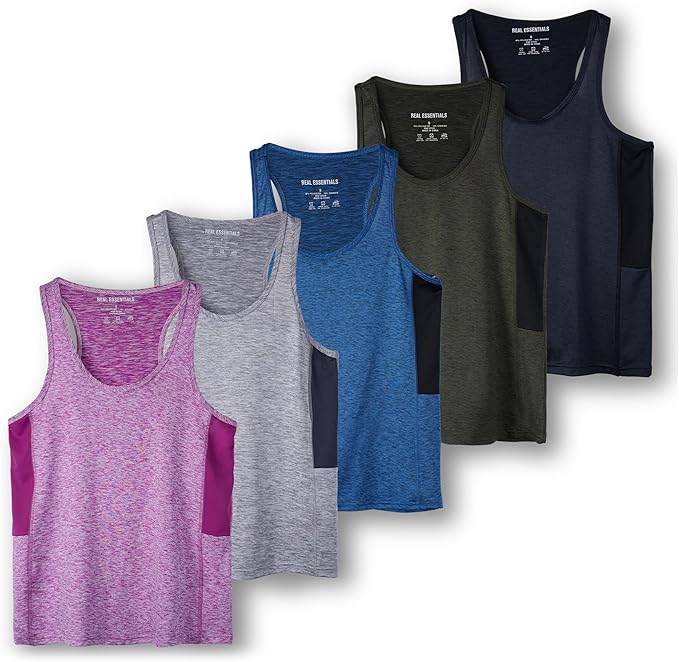
Speaking of wicking moisture, it’s great to spend your days trekking around in dri-fit tops which keep you cool and dry.
You can’t wear just any old shirt backpacking as you’ll be doing tons of physical activity and carrying a heavy pack. Having a sweaty shirt will only weigh you down more.
Long-Sleeve Shirt

When the sun goes down, the mosquitoes come out, leaving your bare arms vulnerable to pesky bites.
Pack a long sleeve shirt to throw on as the temperature drops and the night creatures come out. It’s also the perfect layer for dewy mornings with a little bit of a crisp chill in it. You’ll be glad you have it!
Sweatshirt
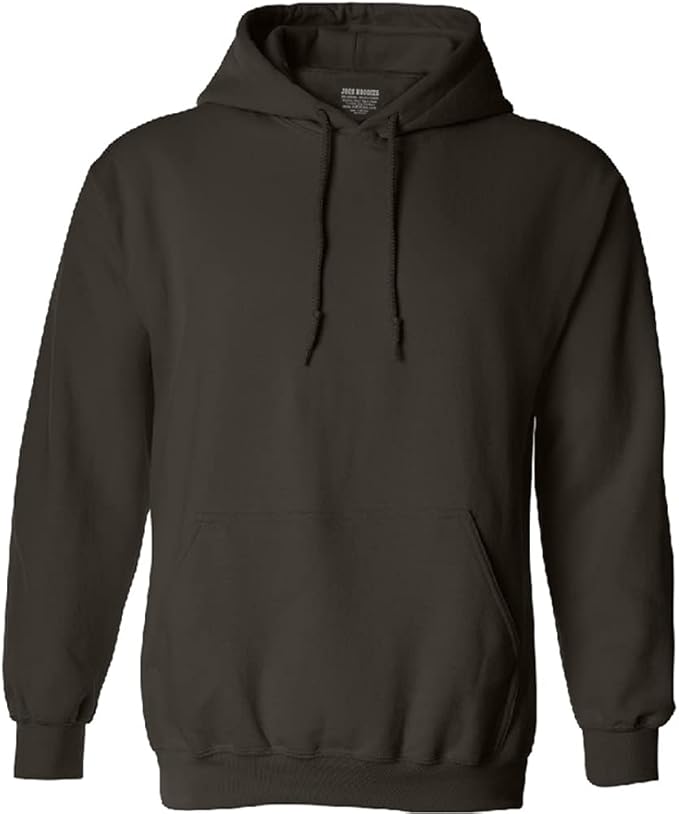
For the times when it’s too cold for only a t-shirt or long-sleeve, it’s comforting to have a sweatshirt or fleece to wrap yourself in.
While they’re bulky and take up space in your pack, it’s certainly worth having for times when you need to warm up! Plus, they make for a kickass pillow if you decide to forego one on your journey.
P.S. To feel good about your purchase, Patagonia’s hoody is made from 95% recycled materials! Linked below.
Lightweight Raincoat

If there’s one thing you shouldn’t forget to pack for your backpacking trip, it’s a raincoat. You never know when it’s going to start pouring, and the last thing you want is to be drenched for the rest of the day.
A lightweight raincoat is perfect because it can fold up to be super tiny in your pack or simply hang off it. It also doubles as a windbreaker and as an outer layer in general for harsher weather.
Dri-fit Underwear
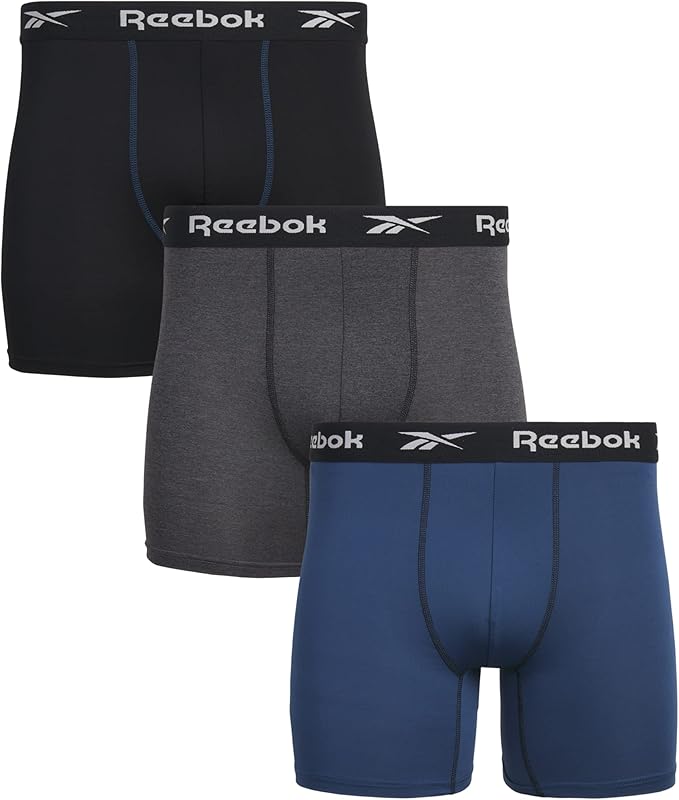
The theme of this clothing section has obviously been moisture-wicking, and that extends to underwear as well.
Dri-fit underwear is your best bet because it’ll keep you feeling fresh all day instead of gross and sweaty. It comes in tons of different styles so you’re sure to find some that work for you!
Sports Bras

Ladies, it’s a good idea to bring an extra sports bra along so you don’t have to wear a stinky one day after day. Again, dri-fit is a good option because it won’t hold in sweat!
SmartWool Socks

Hailed as the best socks for hiking time and time again, a trusty set of SmartWool socks will serve you well on the trail.
These bad boys have reinforced arch and sole support for added comfort, wick moisture to control odor, and will protect your feet from blisters. Does it get much better than that when it comes to trail socks? I don’t think so.
Hiking Boots
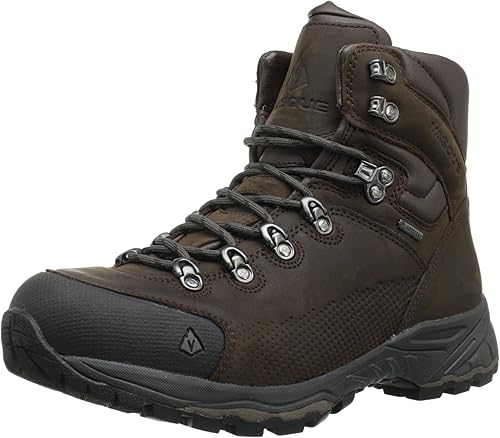
Broken-in, sturdy, and ready-for-anything boots are an absolute must for backpacking.
No matter where you are, what time of year it is or what you’re carrying, you will always be wearing a pair of boots, so picking the best ones possible is more than essential.
Vasque makes quality hiking boots, especially for backpacking as they’re able to provide adequate support while carrying a heavy load. This pair for men and women is a long-lasting pair, offers great traction, and will see you through many expeditions through the wild.
You may also want to consider G-defy shoes.
Looking for the best hiking boots on the market? We’ve got you covered!
Slip-on Shoes
It’s nice to carry a pair of slip-on shoes or sandals with you to wear around camp or to wade through water. Seriously, nothing’s worse than waking up to pee in the middle of the night and having to stuff your feet in hiking boots.
The options here are endless but some popular ones on the trail are Crocs, Chacos, Tevas, and My personal favorites are Rainbows. (although they’re not ideal for water use).
Backpacking Gear: Cold Weather Clothing
If you’re backpacking during colder months, you should add a couple of items to this list like a hat and gloves, as well as a jacket.
Packable down jackets are a great choice for backpacking when it’s cold outside because they’ll keep you warm without adding excessive bulk to your load. Don’t forget something to keep your neck warm and some extra socks as well!
Read our guide to the best packable down jackets
Backpacking Checklist: Toiletries
Let’s face it, you probably aren’t going to be showering much (or even at all) while on your trip, so you can keep the toiletries to a minimum. Besides not needing them, items like shampoo, conditioner and face wash are heavy and not practical for fitting inside of a pack.
Here are just the essentials that will get you through your trip until you’re in the comfort of your own bathroom again.
Toothbrush & Toothpaste

You may be backpacking through mountains or woods, but it’s still important to take care of those pearly whites. Pack a travel-sized toothbrush and enough toothpaste to last for the duration of your trip and don’t forget to brush twice a day!
Wet Wipes

Wet wipes are a true lifesaver on any kind of trip, but feel especially good when you have nothing else to keep you feeling fresh.
Just give your body and face a quick swipe with a wet wipe and you’ll feel infinitely better after a long day of sweating. A convenient shower alternative, wet wipes should be in your pack when you embark on your adventure. These ones are even biodegradable!
Toilet Paper

Toilet paper is another must (grab the biodegradable kind!) but equally as important is the sealable bag you bring with it for the used pieces.
After you’ve finished using nature’s toilet, be sure to stick it in a bag, seal it up and keep moving instead of leaving it behind. Leave no trace, remember?
Hand Sanitizer

Give this a quick squirt or two after using the bathroom or before eating to kill all the grimy bacteria that’s clinging on! My go-to is this organic peppermint spray that does its sanitizing while smelling good.
Feminine Hygiene Products
For all my gal pals, be sure to remember feminine hygiene products if you’ll need them while away! And don’t forget to stick them in that sealable toilet paper bag too after use.
Medication
If you take any prescription medicine, stick that in your pack. You may also want to consider bringing a painkiller like Advil or Tylenol in case you’re really aching after a particularly long day.
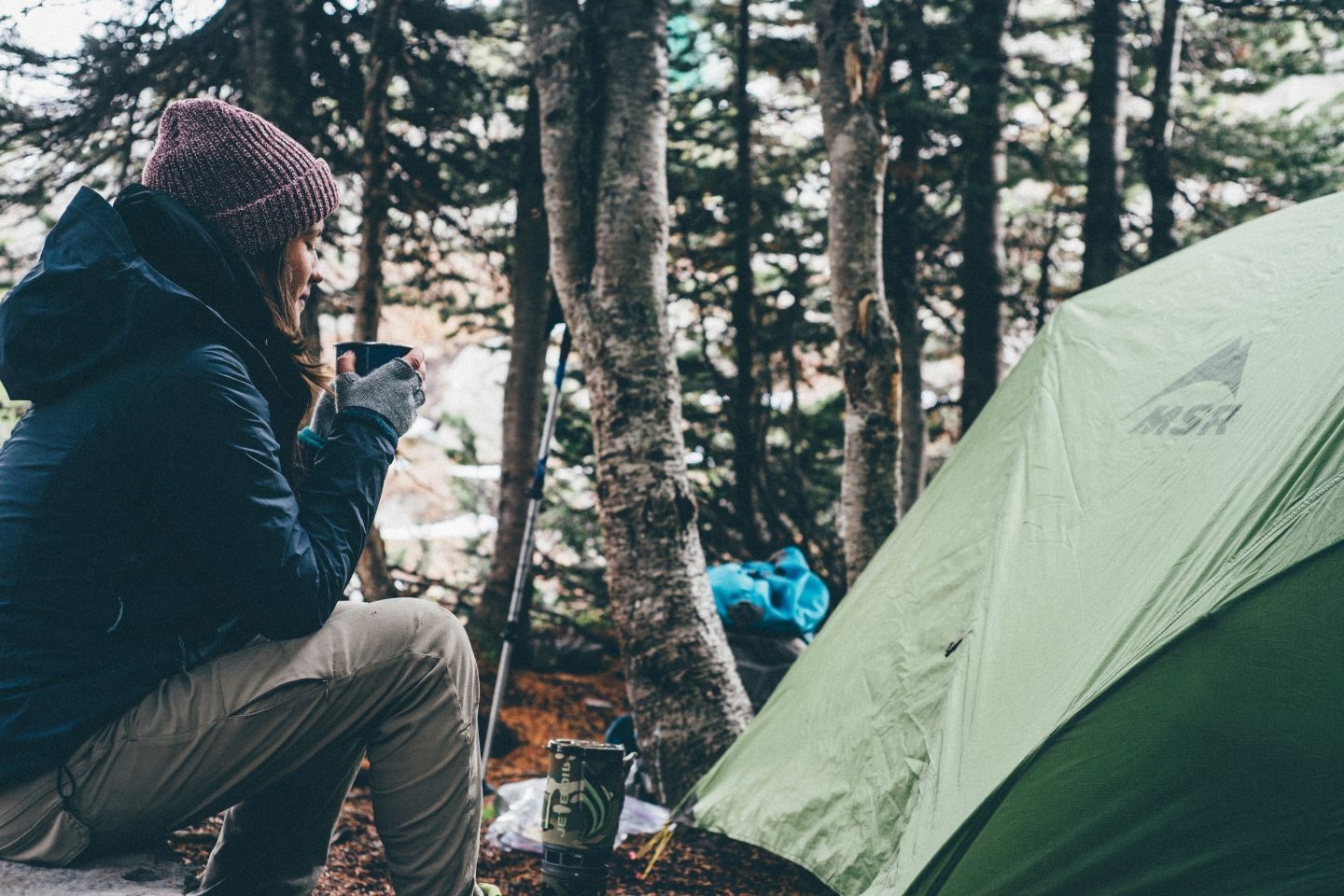
Backcountry Essentials
Being out in the backcountry and living out of a backpack means that you need to be prepared for anything. You’ll be relying on yourself, so it’s important to have everything you need for a successful trip right on your back.
These items will not only provide you with comfort, but they’ll assist in emergencies and keep you safe while trekking along.
Compass

Knowing where you’re going is an important part of any trip, so you’re going to need a compass to point you in the right direction.
It’s nice to get one with a strap so that you can wear it around your neck to consult it whenever you want. Just make sure you have a map of the area to go with it!
Water Bottle

Staying hydrated is half the game, so make sure you have a dependable water bottle to see you through your backpacking trip.
I’m a huge fan of Nalgenes because they’re durable, lightweight, and hold a lot. But if you’d rather have something with a straw, you can go with a CamelBak or Hydroflask!
It’s also a good idea to bring more than one water bottle so that you can have enough to hold you over for a little while if water sources are scarce.
Want more water bottle options? We’ve picked the best water bottles out there!
Water Filter

Along with a water bottle, a water filter is essential. Getting sick miles away from civilization with a full load on your back is a highly undesirable outcome. Protect yourself against waterborne bacteria and parasites by filtering your water with a LifeStraw.
You can either stick it in your water bottle or drink it right from the source with it! It’s compact and easy to fit anywhere in your pack, making it a good choice for any type of backpacker.
Headlamp

As the sun starts to set, you may still be walking or setting up camp. Instead of fumbling around in the dark, put on your trusty headlamp and keep chugging away.
Headlamps are ideal because they leave your hands free so you can rummage in your pack, cook dinner, or read your book — all while lighting up the night!
Multi-Tool

A multi-tool will come in handy at one point or another, that’s for sure. It’s also a good item to have in case of an emergency.
I’m a fan of Swiss Army Knives because of how small and useful they are. I find they have everything I need when I’m in a jam, from snipping off loose threads to screwing my sunglasses tighter!
Duct Tape

There will also be a point along your backpacking trip where you’ll say “thank god I brought some duct tape!” Super versatile and able to repair just about anything, duct tape will serve you well.
Quick Tip: You don’t have to bring an entire roll! Instead, make a small package of it by rolling some around itself. This way you’ll have only what you need and can fit it in small spaces.
Emergency Whistle
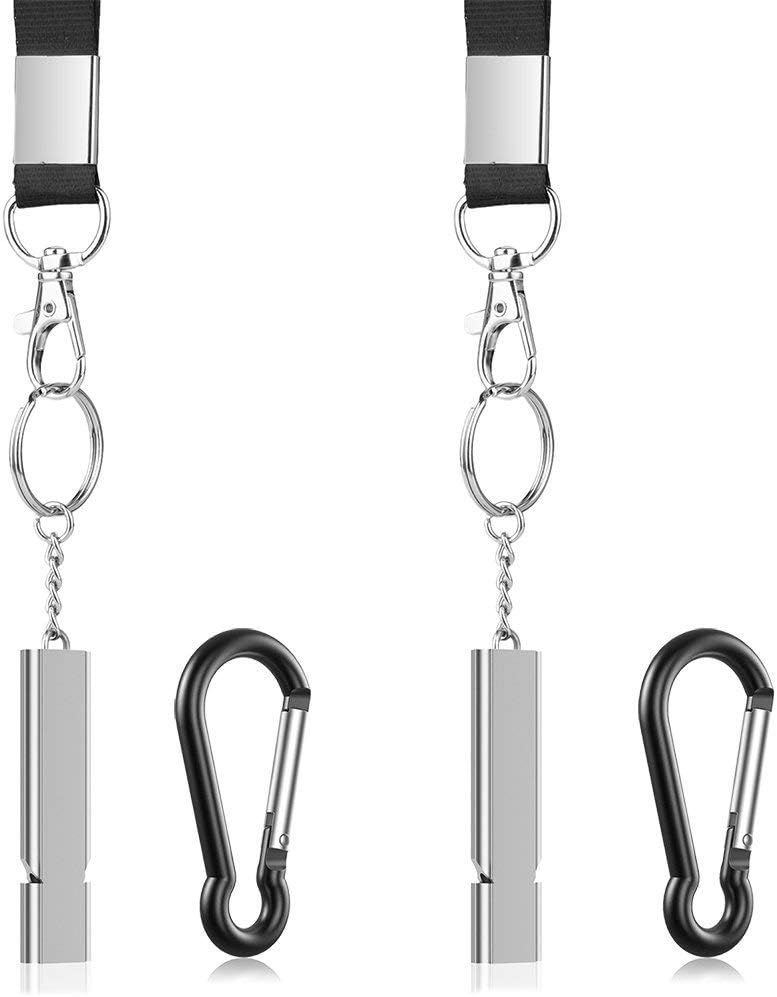
You may not think this is essential, but it is. If something were to go wrong, blowing this whistle will alert those nearby of your location and hopefully bring help.
Wear this at all times and if you’re lost, fallen in a ditch, or just need help in general, give this a toot or two and wait to be rescued.
Emergency Blanket

While we’re on the topic of emergencies, one of these foil blankets could save your life.
From protecting you against harsh weather or being used after a shock, emergency blankets are lightweight, flat, and worth bringing onto the trail with you.
Fire Starter

One last emergency item is a fire starter. Just in case you find yourself in a pickle, lighting a fire could be a life-saving move.
This one is easy to use and quite small, so stick it on the top of your pack for safekeeping.
First Aid Kit

A good first aid kit should accompany you on the trail at all times. While this one is small, it has everything you need for covering up blisters, patching wounds, disinfecting, pulling out splinters and much more.
It even comes in a waterproof pouch so that the contents inside stay nice and dry.
What’s more, all the sections in the kit are labeled so you won’t have to rummage around to find what you’re looking for under stress.
Lighter/Waterproof Matches


For cooking, fire starting (without the fire starter), and anything else you may need a flame for, a lighter will be needed.
You can one-up your flame game with a set of waterproof matches. This way you won’t risk them being rendered unusable by an unexpected shower or stream crossing.
Bugspray

Nothing’s worse than spending your day scratching. Protect yourself from mosquitos and other bugs with repellant.
I always go for the natural kind because it’s better for the environment and actually smells good. Definitely essential for any backpacking trip.
Sunscreen

Okay, maybe the only thing worse than bug bites are sunburns, especially when you have to wear a heavy pack. Be sure to coat yourself liberally with sunscreen, even when it’s not particularly hot, to protect yourself from harmful UV rays!
Sunglasses

Durable, adventure-proof sunglasses are also a must have on the trail. You’ll want something to protect your eyes and keep you looking fly as you hike along. This sunglasses are our go to, no matter the exploring that’s in front of us because you can customize them to be exactly what you want!
Backpacking Gear: Optional Items
Here are some items that may come in handy on your backpacking trip, but aren’t entirely necessary. We figured we’d include them in the checklist, just in case you have some extra room in your pack.
Trekking Poles

A solid set of trekking poles is a worthy backpacking companion because they’ll help you navigate sketchy terrain and keep your balance, but mostly support you when you feel like collapsing (at least that’s their main benefit in my experience).
This set is crazy durable and won’t break on impact or when stuck in a rocky place. They’re also pretty lightweight and can be adjusted anywhere from 4 feet to 6 feet 4 inches! TrailBuddy even included different tips to be attached to the bottom when you encounter elements like mud or snow.
Lantern

For times when you want a stationary light rather than one that moves with your head, a lantern is a worthy option.
This collapsible one runs on AA batteries and comes fully equipped with handles so you can hang it from the top of your tent or a tree branch when you want to flood an area with light. Prefer a little mood lighting? Use one of the four brightness settings to get a less harsh light.
Plus, it weighs less than one pound so you don’t have to worry about it weighing you down!
Hat

You may want to consider bringing a hat to protect your head from sun or other elements you may experience along the way.
I love this one because they effectively protect you and can be hung from your neck when you don’t want to wear it on your head. It also wicks moisture so it’ll keep you feeling cool even when the sun is high in the sky.
Bathing Suit

If you come across a stream, lake, or pond, you may want to have a little dip to cool off. Pack a bathing suit so you don’t have to soak your clothes!
I love this bikini because it’s simple and easy to pack. For guys, be sure to bring your favorite board shorts along!
Quick Dry Towel

Something to dry off with after a swim would be nice, but a towel is also good for cleaning up spills or freshening up.
Quick dry towels are best because they do exactly that — dry quickly. You won’t have to put it in your backpack soaking wet but instead can have something nice and dry for your next use. This one even comes with its own carrying pouch.
Field Guide
If you can come across a local field guide, that may serve you well too. Being able to identify plants and animal prints will greatly help you along the trail as well as keep you safe.
This item isn’t absolutely necessary but it will certainly give you peace of mind when it comes to figuring out whether you walked through a patch or poison ivy or not.
Backpacking Packing List: Just For Fun
Now for the fun stuff! Just because you’re backpacking doesn’t mean you can’t have a little bit of fun in your downtime.
Here are some items that will enhance your trip or give you something to do when you’re not hiking.
Daypack

Besides your big backpack, it’s nice to have a daypack as well for shorter excursions away from camp.
This one is a great option because it’s extremely lightweight and compresses to be almost nothing, making it practical for packing. Plus, it comes in tons of different colors, allowing you to stand out while hiking in the wilderness.
Book

Entertainment is key, especially when by yourself away from civilization. Bring a book that you can get lost in before falling asleep at night, or when you find a tranquil moment to rest. Here are some of the best travel books for inspiration!
If you’re looking for some good trekking inspiration, I just finished “A Walk in the Woods” by Bill Bryson and it made me crave some wooded adventures the entire time I was reading.
Journal & Pens


For jotting down thoughts or writing about your day, you’ll be happy to have a place to put pen to paper. A huge tip is to keep your journal in a plastic bag, along with your book, so that it doesn’t get wet!
Camera/GoPro


You’re sure to see breathtaking sights while traversing through mountains or remote wilderness.
Whether you want to capture a passing moose or a panoramic landscape, bring a camera to get that perfect shot. A GoPro is a good choice for backpacking as it’s rugged, waterproof, and can capture action well.
Prefer another type of camera? Our guide to the best travel cameras can help!
Hammock

Travel hammocks are one of the greatest inventions known to man! They allow you to create a cozy place to rest as long as you find two trees to string it up between.
This travel hammock is my top pick because it’s durable, lightweight, and comes with tree straps to make setting up a breeze.
Playing Cards

If you’re backpacking with another person, having some games to play between the two of you will help with entertainment during downtime. A deck of cards is easy to slip into any pocket of your pack and pull out at a moment’s notice. Just be sure not to lose any!
Binoculars

Finally, if you’re a wildlife lover, bring a pair of compact binoculars like these ones to explore beyond what the naked eye can see. Catch sight of birds and other wild animals while keeping a safe distance.
Don’t Forget: Tick These Off Your Backpacking Checklist!
So now your pack is completely full and ready to be taken out for a spin. Here are some last minute items that you absolutely cannot leave home without!
- ID
- Keys
- Phone
- Wallet with extra cash
More Backpacking Tips & Tricks
You’ll have found some tips for packing throughout this article, but here are some additional ones to make your life a little bit easier, whether you’re preparing for your trip or on the trail already!
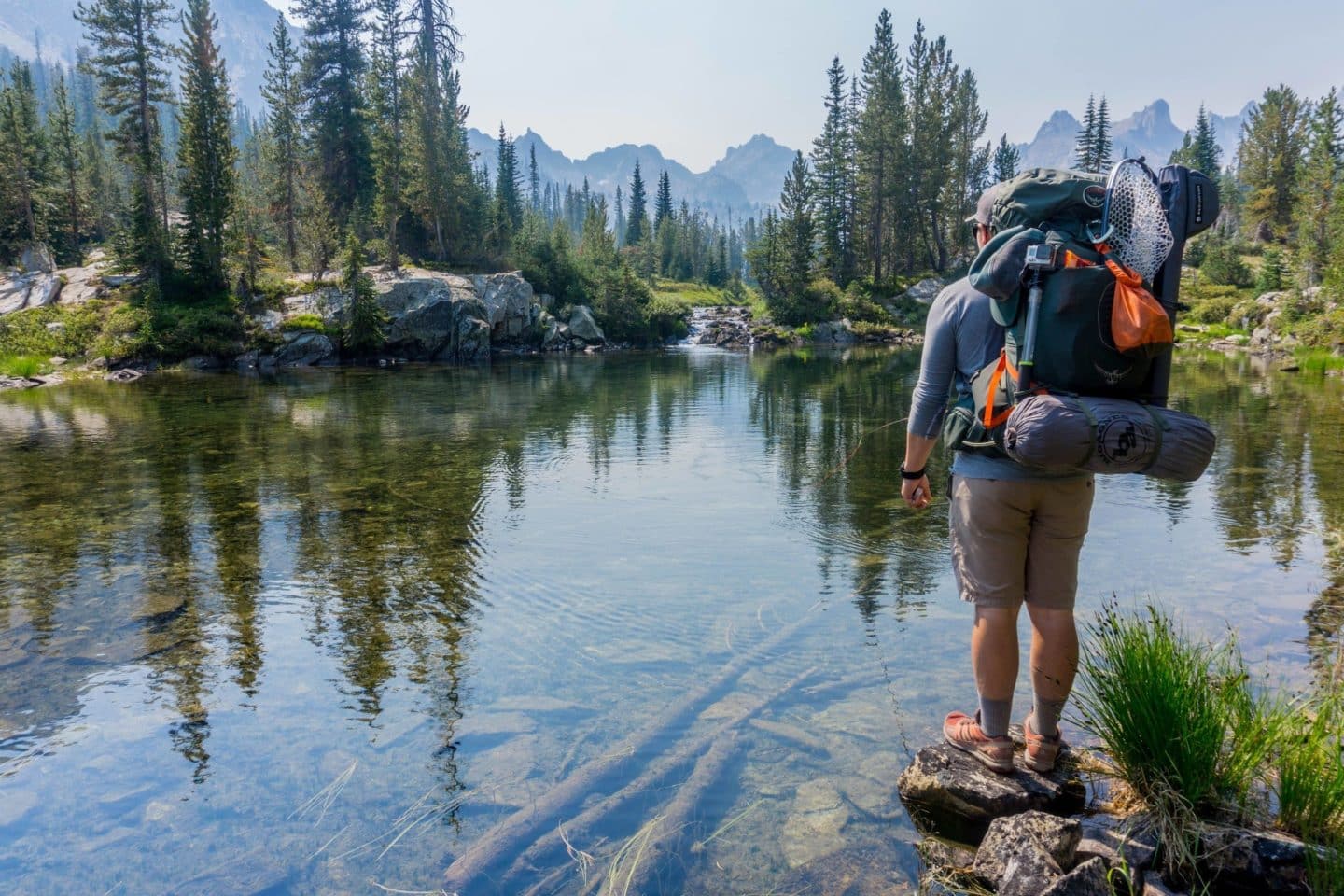
Be Sure to Let People Know Where You’re Headed
This is my biggest tip because it will add to your safety no matter where you are. Leave copies of your itinerary with people so that in the case of an emergency, someone will have a rough idea of where you are.
Pack Light
If you’ve taken anything away from this backpacking checklist, it should be that weight is of the essence.
No, you don’t need that pair of jeans. Yes, one sweatshirt is enough and no, you don’t need an air mattress — a sleeping bag will be just fine. It’s challenging enough as it is to carry a heavy pack, so try and keep the weight to a minimum by packing only what you truly need.
When in Doubt, Use Ziplock Bags
No matter what I’m packing for, I’ve found that ziplock bags are a true lifesaver. They weigh next to nothing, and do wonders when it comes to keeping your bag organized.
Follow “Leave No Trace” Principles
One of the most important parts of backpacking is doing no harm to the natural environment you’re inhabiting. This means taking out all the trash you take in, leaving your campsite the way you found it, and not removing items from the landscape.
When in doubt, follow Smokey’s advice: “Take only pictures and leave only footprints.” You can find all 7 leave no trace principles here.
The great outdoors are calling! Are you ready? After running through this checklist, you ought to be! Be safe, breathe in that fresh mountain air and disconnect for a little while. There’s truly nothing better.
Happy trails!
Need some adventure travel inspiration? Check out these articles!
- 7 Adventure Holiday Destinations for the Active Traveler
- Top 50 Adventure Holidays
- Best Scuba Diving Destinations in the World
Inspired? Pin It!
